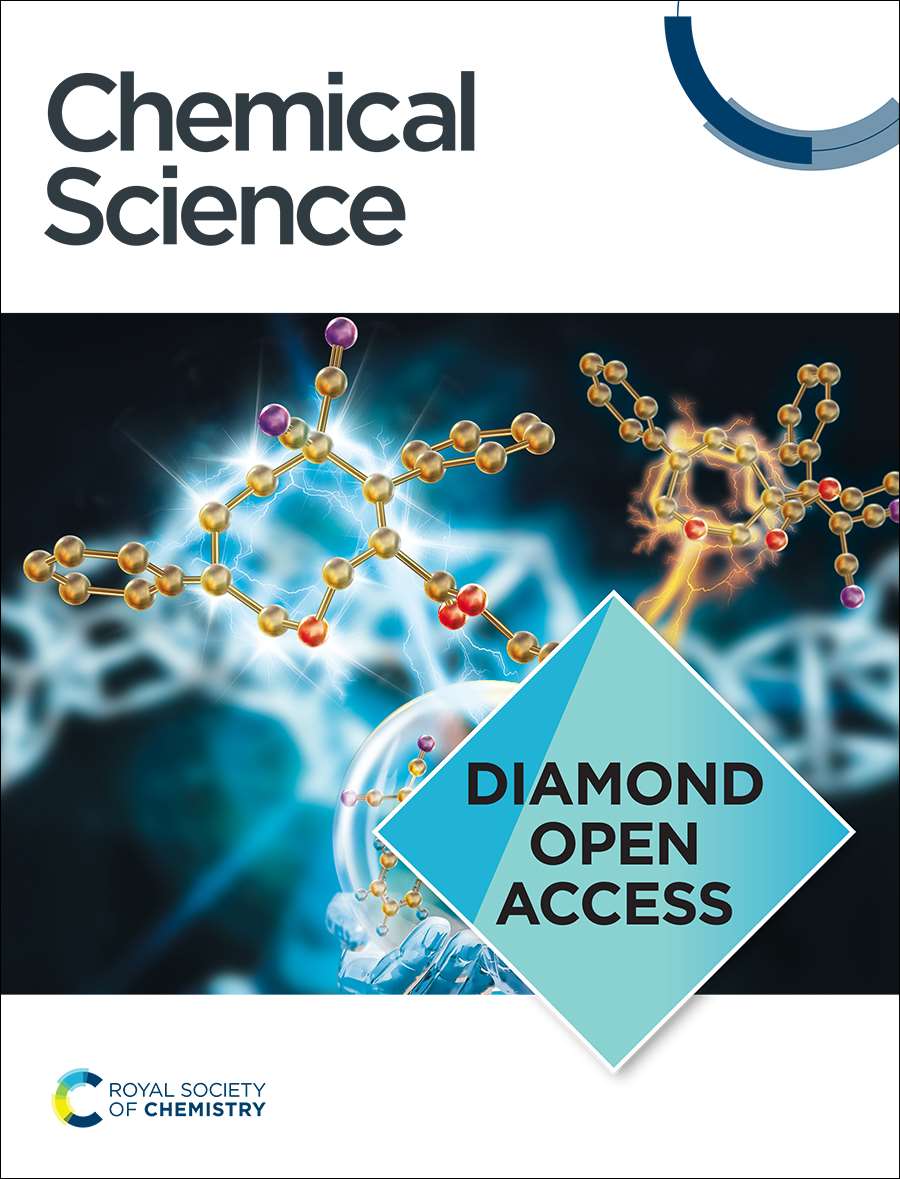揭开金属配体协同催化光化学苯羰基化的神秘面纱:一种机理方法
IF 7.6
1区 化学
Q1 CHEMISTRY, MULTIDISCIPLINARY
引用次数: 0
摘要
绿色合成面临的一个关键挑战是如何以最低的能量输入(ΔG≈0),在高原子和能效的条件下催化转化可再生底物。非热途径,即电化学和光化学,可用于利用可再生能源,以明确的能量输入和效率驱动化学过程。在此背景下,光化学苯羰基化生成苯甲醛是一个特别有趣的过程,尽管具有挑战性,但它结合了不利的热力学(ΔG° = 1.7 kcal/mol)、强 C-H 键的断裂(113.5 kcal/mol)、全原子效率和可再生起始材料的使用。在此,我们介绍了一种铑基钳形配合物催化光化学苯羰基化的机理研究,该配合物能够进行金属配体合作。我们通过核磁共振光谱、紫外可见光谱和分光光化学以及密度泛函理论计算对包括热步骤和非热步骤的催化循环进行了探究。这项研究为我们提供了对反应机理的详细了解,使我们能够揭示 Rh-钳子配合物的催化反应性,该配合物代表了苯羰基化金属配体合作体系的第一个实例,表现出卓越的选择性。本文章由计算机程序翻译,如有差异,请以英文原文为准。
Unlocking Metal-Ligand Cooperative Catalytic Photochemical Benzene Carbonylation: A Mechanistic Approach
A key challenge in green synthesis is the catalytic transformation of renewable substrates at high atom and energy efficiency, with minimal energy input (∆G≈0). Non-thermal pathways, i.e., electrochemical and photochemical, can be used to leverage renewable energy resources to drive chemical processes at well-defined energy input and efficiency. Within this context, photochemical benzene carbonylation to produce benzaldehyde is a particularly interesting, albeit challenging, process that combines unfavorable thermodynamics (∆G° = 1.7 kcal/mol) and the breaking of strong C-H bonds (113.5 kcal/mol) with full atom efficiency and the use of renewable starting materials. Herein, we present a mechanistic study of photochemical benzene carbonylation catalyzed by a rhodium-based pincer complex that is capable of metal-ligand cooperation. The catalytic cycle, comprising both thermal and non-thermal steps, was probed by NMR spectroscopy, UV-visible spectroscopy and spectrophotochemistry, and density functional theory calculations. This investigation provided us with a detailed understanding of the reaction mechanism, allowing us to unlock the catalytic reactivity of the Rh-pincer complex, which represents the first example of a metal-ligand cooperative system for benzene carbonylation, exhibiting excellent selectivity.
求助全文
通过发布文献求助,成功后即可免费获取论文全文。
去求助
来源期刊

Chemical Science
CHEMISTRY, MULTIDISCIPLINARY-
CiteScore
14.40
自引率
4.80%
发文量
1352
审稿时长
2.1 months
期刊介绍:
Chemical Science is a journal that encompasses various disciplines within the chemical sciences. Its scope includes publishing ground-breaking research with significant implications for its respective field, as well as appealing to a wider audience in related areas. To be considered for publication, articles must showcase innovative and original advances in their field of study and be presented in a manner that is understandable to scientists from diverse backgrounds. However, the journal generally does not publish highly specialized research.
 求助内容:
求助内容: 应助结果提醒方式:
应助结果提醒方式:


